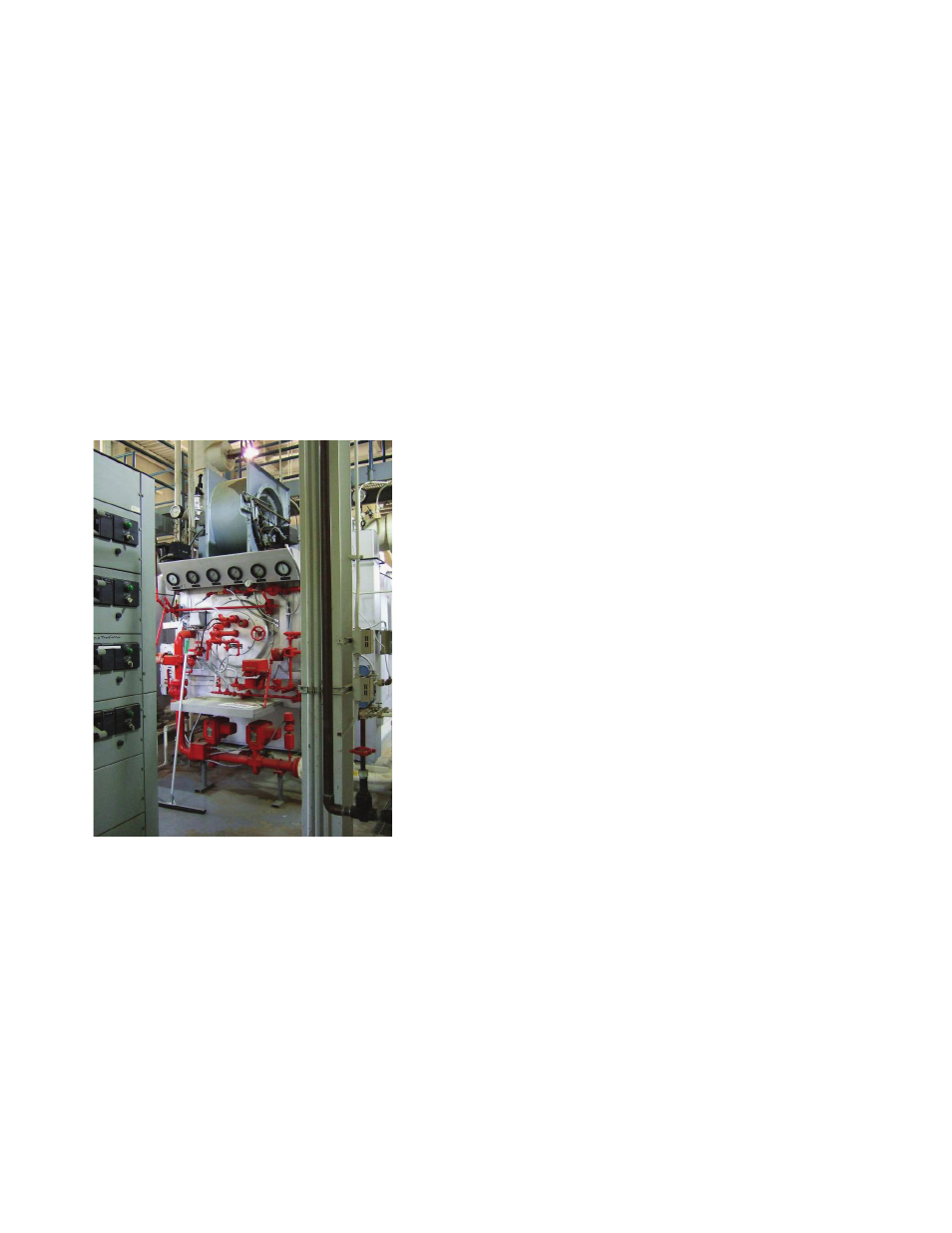Retrotec USACE User Manual
Page 179

Appendix D D49
bustion gases up the stack. The heated air in the boiler and the height of the
stack causes this air fl ow to occur. In large boilers, there is a powered blower
sending air to the burner that is called the forced draft fan, and in some cases
there is also a blower after the boiler sending the products of combus tion to
the stack that is called the induced draft fan (Figure D79). There are dampers
in this air route to control the amount of fl ow; if they do not operate correctly,
poor combustion can occur. Excessive air results in heating waste by raising
the temperature of the extra air; insuffi cient air causes incomplete combus-
tion of the fuel. Dampers are also used to isolate boilers not operating during
low heating periods (Figure D80). These boilers are typically kept warm for a
quick start with minimum stress, but letting dampers remain open—allowing
air to pass through the boiler and up the stack—wastes heat.
D.4.1.10 Inoperable, Uncalibrated, or Poorly Adjusted Controls
(Ineffi ciency)
Figure D81. Boiler combustion controls of an
effi cient boiler.
Boiler controls consist of monitoring the boiler load, stack draft, and com-
bustion emissions for establishing fi ring rates and the proper fuel air mix-
ture. In addition to generating heat, modern burners are designed to pro-
vide for the combustion of fuel with only a low quantity of air pollutants
(e.g., Figure D81). Particulates, carbon monoxide, and oxides of nitrogen
are items of concern from an air quality point of view. Providing complete
combustion with a minimum of excess air is the goal for peak energy ef-
fi ciency. The boiler controls should monitor the amount of carbon monox-
ide, oxygen, or carbon dioxide, plus pollutants of concern, and then make
adjustments in the fi ring rate and the amount of air passing through the
